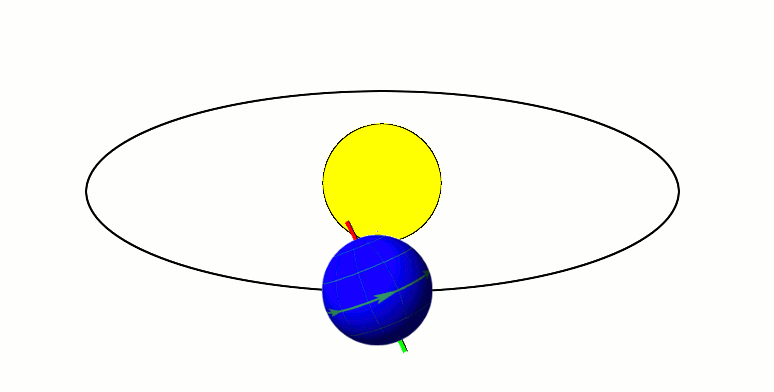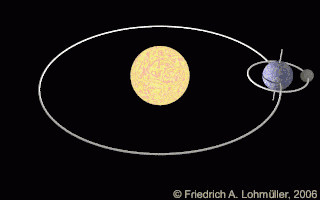Explain It To Me
The Problem
We treat reckoned time as a known, factual basis of our lives. Although we can scroll forward in time with our calendar indefinitely, can we also do that backwards, into the past?
We remember and memorialize days of past transformative experiences: September 11, 2001; June 6, 1944; July 4, 1776. We can also link our calendar, the Julian/Gregorian Calendar, to calendars of other cultures. For instance, Muhammad’s “Hijra,” his journey from Mecca to Medina, marks the beginning of the Islamic calendar, and corresponds to April 19, 622.
What about scrolling back to a time before the turn of the eras?
Before the Julian Calendar, the Seleucid Empire’s calendar was the universal calendar in the ancient Old World. However, this calendar is in fact an extension of the ancient Babylonian Calendar.
So then, we should be able to scroll back and ask precisely when an important event occurred. The current answer would be on one date, or the day before, or the day after. Although we may know the date of an event in the Babylonian Calendar, we do not know how much time elapsed between it and another event nor how to align that precisely with dates in other calendars, such as with the Julian Calendar.
Why Not?
The simple answer is that, before the Shanati Project, a chronology of pre-Julian times that is accurate to the day did not yet exist.
Rather than maintaining a fixed calendar, the ancient Babylonians had to make regular determinations about the lengths of months and the number of months per year, in order to grapple with the complex nature of their luni-solar tradition.
A luni-solar calendar places value on the cycles of the lunar month and the solar year. These periods of time are very natural and tangible in pastoral-agricultural socieites, since the moon's cycle is clearly evident in the night sky and through the tides, and the sun's cycle controls the procession of the seasons.
There are two inherent calendrical problems in this dual system of time. First, the length of the lunar month of about 29.5 days does not fit our conception of the unity of the day. In other words, a calendrical month cannot have half of a day. Second, the number of days in a solar year (about 365) and the number of days in a lunar year (12 months of 29.5 days, or about 354 days) do not coincide.
 |
 |
|
Figure 1a: Solar year (earth’s orbit around sun), 365 days [1] |
Figure 1b: Lunar month (moon’s orbit around earth), 29 ½ days (x12 months = 354 days) [2] |
The ancient Babylonians solved these problems. First, they allowed months to be either 29 or 30 days long. Second, they added a 13th month to the year every few years.
But, they generally made these decisions each month and each year. Our problem is that we do not know what these calendrical decisions were for each month and each year over the course of over 850 years of cuneiform records in approximately the 1st millennium BCE, from 750 BCE - 100 CE.
The Solution
To solve these problems, Shanati is working to compile and integrate all known relevant cuneiform and other textual attestations of dates relevant to the ancient daily Babylonian chronology.
There are over 80,000 potentially relevant texts, making this task seem gargantuan. But, by drawing upon the numerous databases of these texts, generously provided by numerous scholars and institutions, Shanati becomes feasible.
The task is made more complex by the different nature and social contexts of the kinds of texts that are available and the development of Babylonian mathematical astronomy. Some are economic contracts and receipts, while some are scholarly astronomical exercises. Some were written by top scribes in the major cities, and some were written out in the sticks. And, over time Babylonian astronomical sophistication improved, pushing the system away from astronomical observation and toward calculation.
To handle the variety of the evidence, Shanati is working to better understand the processes of ancient Babylonian calendrical decision making and the dissemination of these decisions. To this end, we have developed an algorithm to properly weigh the value of each textual attestation based on the text's social context, location of writing, and genre.
But, Does the Math Add Up?
Aha! You guessed it! It's not so simple.
Even though there are so many texts available, we are talking about a period of 850 years, with over 10,000 months. Maybe 80,000 texts isn't enough?
Shanati has two solutions to this problem.
First, the textual data will be aligned with a newly calibrated, state-of-the-art astronomical model for calculating first lunar visibility in ancient times. This will provide the best possible estimations for unattested calendrical decisions.
Second, the database and computational side of Shanati is being developed so that it will be left open ended after the project is completed. As more ancient texts are discovered, read, and databased, scholars will be able to submit new calendrical evidence to Shanati, which will allow for automated updating of Shanati's reconstruction.
So, each time you check a date in Shanati, you will get the most up-to-date reconstruction of the daily ancient Babylonian Calendar, as it was lived by the ancients. And, over time, as more data is added, Shanati's calendar will come closer and closer to 100% coverage and certainty.